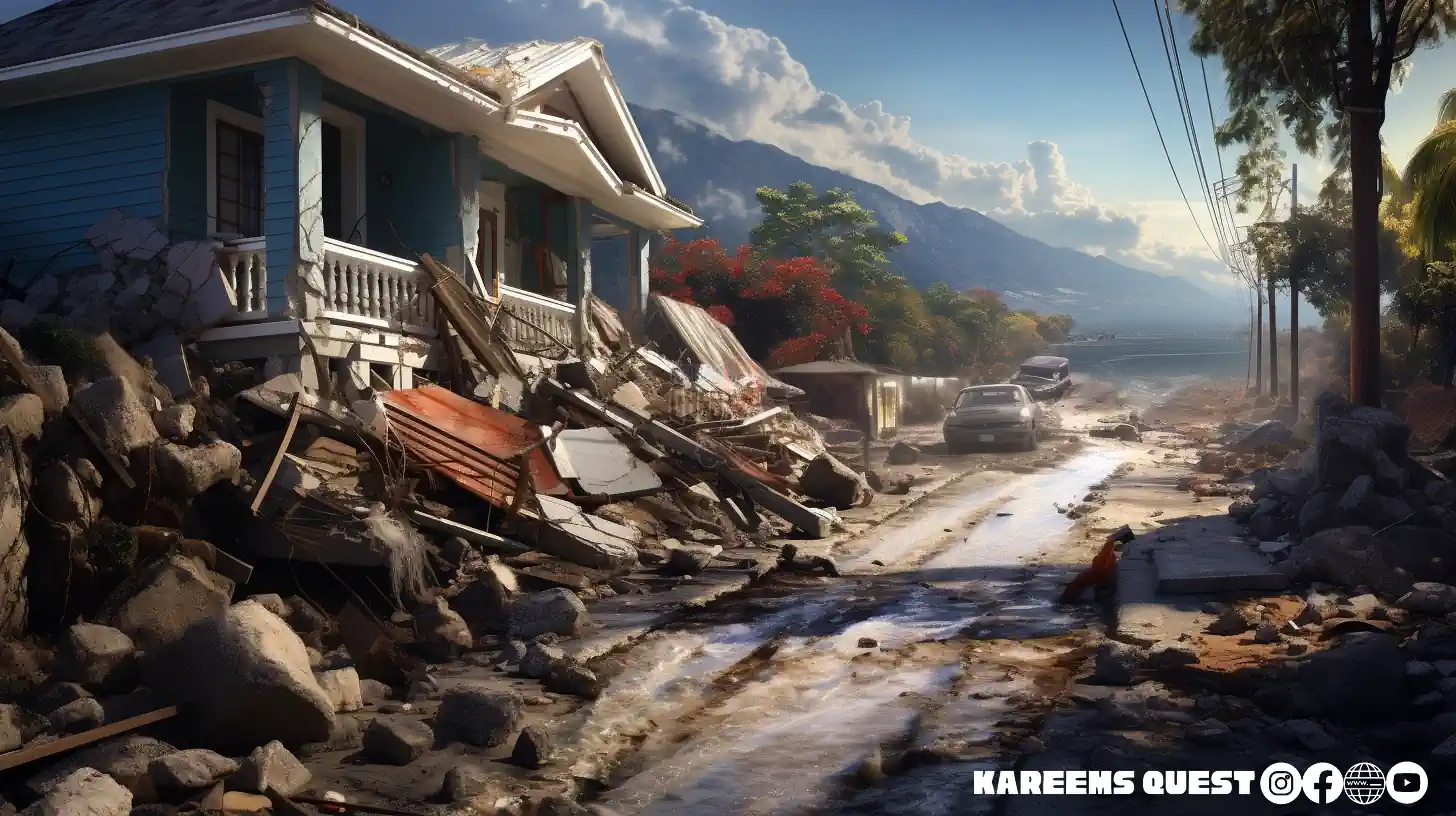A 5.6 magnitude earthquake struck Jamaica on Monday, October 30, 2023, prompting people to flee buildings amid heavy shaking. The earthquake’s epicenter was about 2 miles (4 kilometers) west-northwest of Hope Bay in northeastern Jamaica, according to the U.S. Geological Survey. It occurred at a shallow depth of 6 miles (10 kilometers).
The earthquake caused minor damage to some buildings and grocery stores, with food, wine bottles, and other items tumbling off the shelves. There were also reports of power outages in some areas.

The earthquake sparked fear on the island, with some people rushed to hospitals for panic attacks. However, there were no immediate reports of serious injuries or casualties.
Video of the Week – Old Time Jamaica
This will undoubtedly go down as one of the most devastating earthquakes in the country’s recent history. Prompting us to look at past earthquakes that rocked the nation.
January 13, 1993
On January 13, 1993, Jamaica experienced its most significant earthquake in over 30 years. The magnitude 5.4 earthquake caused widespread damage to infrastructure, buildings, and homes.
There were also two fatalities and hundreds of people were displaced.
One of the most significant impacts of the earthquake was the damage to water infrastructure. The Rio Cobre pipeline in Caymanas Estate was damaged due to liquefaction, which is a phenomenon in which the strength and stiffness of soil is reduced by earthquake shaking. Liquefaction-related cracks were also observed on the Hunts Bay Causeway Bridge and there was damage to the National Water Commission Water Treatment Plant building, water mains, and pipelines in several areas. This damage caused widespread water outages and disruptions to the island’s water supply.
The earthquake also caused significant damage to educational institutions. Many schools were damaged or destroyed, which disrupted education for thousands of students.
In addition to the damage to infrastructure and buildings, the earthquake also had a significant economic impact. The total cost of damages was estimated to be $200 million. This included the cost of repairs to infrastructure, buildings, and homes, as well as the loss of business and income.
The earthquake also triggered landslides along the Yallahs Water Pipeline route and in other areas of the island. Landslides blocked or damaged a number of roads, which disrupted transportation and made it difficult to reach some communities.
The 1957 earthquake

On March 1, 1957, Jamaica experienced a major earthquake with a magnitude of 6.2. The earthquake was the strongest felt on the island since 1907 and caused significant damage, particularly in the western parishes and the corporate area.
Effects of the Earthquake
- The earthquake caused widespread disruption of essential services, including electricity, transportation, and communications. Jamaica Public Service reported damage to communication systems in several areas of Kingston, and telephone lines to Ocho Rios and Montego Bay were down for several hours. Train services from Kingston to Montego Bay were also affected, as stones and debris blocked the track.
- The earthquake caused three deaths and several injuries. One person was killed by falling bricks from a wall in Kingston, another was crushed by rolling stones, and a railway employee was killed by falling stones.
- It caused damages to buildings and infrastructure across the island, but the worst damage was seen in the western parishes and the corporate area. In Montego Bay, the steeple of the St. James Parish church fell off, the clock tower was completely destroyed, and several other buildings were badly damaged. Spring Mount Police Station in St. James was also badly damaged and had to be vacated.
The Kingston earthquake (1907)

On January 14, 1907, the city of Kingston, Jamaica, was struck by a massive earthquake that measured an estimated 9.5 on the Richter scale. The earthquake caused widespread destruction, killing over 1,000 people and injuring thousands more. It was the deadliest earthquake in Jamaica’s history.
The earthquake struck at approximately 3:30 p.m., as people were preparing for the evening rush hour. The ground shook violently for over 30 seconds, and many buildings collapsed. The earthquake was followed by a series of fires that broke out throughout the city. The fires raged for hours, destroying much of the city’s commercial district.
In the aftermath of the earthquake, Kingston was in ruins. Over 80% of the city’s buildings were damaged or destroyed, and thousands of people were left homeless. The relief effort was coordinated by the British colonial government, and assistance was also provided by other countries, including the United States.
Impact of the Earthquake
The impact of the 1907 Kingston earthquake was far-reaching. In addition to the loss of life and property, the earthquake also had a significant impact on the Jamaican economy. The destruction of the commercial district disrupted trade and commerce, and many businesses were forced to close. The earthquake also led to a decline in tourism, which was a major source of income for Jamaica.
The earthquake also had a social impact on Jamaica. The destruction of homes and businesses left many people homeless and unemployed. The earthquake also led to a loss of cultural heritage, as many historic buildings were destroyed.
Rebuilding Kingston
The rebuilding of Kingston began shortly after the earthquake. The British colonial government provided financial assistance to help people rebuild their homes and businesses. The government also implemented a number of new building codes to ensure that future buildings were more earthquake-resistant.
Kingston was rebuilt in a more modern style, with wider streets and taller buildings. The city also became more diverse, as people from all over the world came to help with the rebuilding effort.



